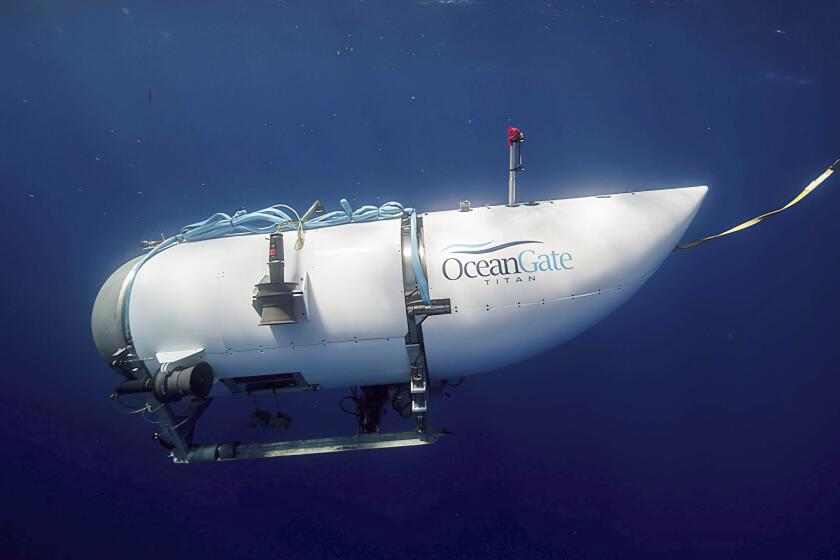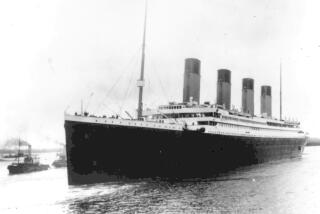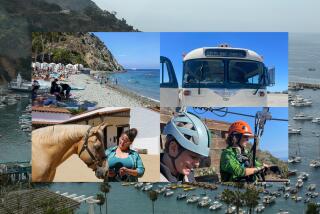SoCal submarine tour business motors on in shadow from Titan disaster
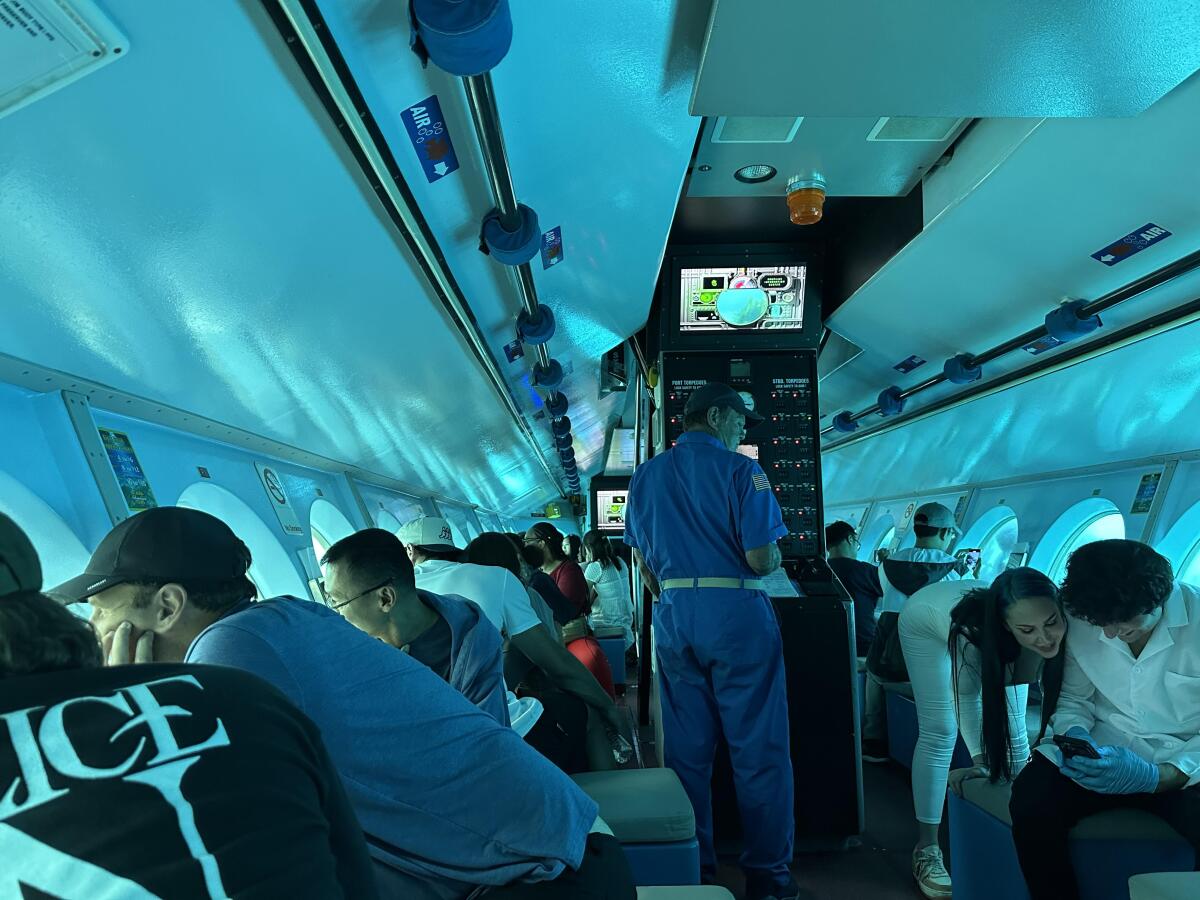
As they do on any other sunny day, people packed into the narrow cabin of the bright yellow Nautilus, a semi-submersible owned and operated by Catalina Adventure Tours, on Friday to experience an under-the-sea adventure off the shores of Avalon, Calif. — but not too deep.
But this wasn’t any other day. Just 24 hours earlier, after days of dramatic headlines, the U.S. Coast Guard had declared that a submersible called the Titan suffered a “catastrophic implosion” during its descent to inspect the wreck of the Titanic on June 18, killing the five people aboard. News coverage of the ultimately fruitless search threatened to cast a pall over the underwater tourism business in Southern California, although members of the industry hastened to point out the many differences between the kinds of excursions on offer in places such as Avalon and the one that ended in tragedy.
The most obvious difference: the depth. The wreck of the Titanic rests more than two miles down. The Nautilus goes only 8 feet below sea level, and part of the vessel stays above the surface the entire time.
Around 30 people purchased tickets for the 45-minute trip around Avalon Bay on Friday afternoon.
Diana Segovia sat on Green Pleasure Pier waiting to board the 65-foot-long semi-submersible; she was vacationing in Santa Catalina with her son, who wanted to take the underwater excursion.
Long before a submersible vanished on an expedition to explore the wreck of the Titanic, concerns were raised about the safety of the vessel.
“I read everything. Pretty sad, super sad,” Segovia said before boarding. “But, no hesitations about this because this is not going so deep.”
Asked whether she would ever consider being submerged fully, however, the answer was a stern “no.”
“I would not get on,” Segovia said. “You couldn’t pay me the $25,000, $50,000, whatever.”
Inside the passenger cabin, a row of large portholes runs down each side, with small buttons next to them that allow passengers to shoot fish food “torpedoes” at the sea life. At the rear of the cabin is an emergency exit and a bulkhead with a bevy of certificates posted on it. On display were certifications from the Federal Communications Commission, the Coast Guard and the Department of Homeland Security.
These are just a few of many certifications submersibles must obtain to operate. One of the most important is the certification from the American Bureau of Shipping, which works with the Coast Guard to conduct annual safety checks. The requirements include a tracking system and backup supplies for four days, among others.
Additionally, submersibles must meet certain requirements for design, engineering and testing laid out by DNV, a Norwegian organization that oversees maritime safety standards.
These stringent requirements govern almost all submersibles that make it into the water, said Jon Council, president of the Historical Diving Society and a veteran diver with more than 30 years of experience. Council has operated vehicles for submersible companies SEAmagine and Triton — the kind that go considerably deeper than 8 feet.
“There are that many manufacturers, and they all adhere to the same rules and regulations, and they all get their crafts certified,” Council said. “Those machines operate until they retire them.”
The lost Titan submersible lacked those certifications. Industry safety officials and OceanGate employees had raised concerns about the experimental design, saying it “could result in negative outcomes” from minor to catastrophic.
The regulatory regime “could get tighter now because the Titan was not classed or certified,” Council said. “In actuality it shouldn’t.”
The trip in the Nautilus all went according to routine. The vessel, which has been operating since 1999, took tourists and passengers to three locations around the island to see the ocean life. Rated to carry up to 51 passengers, it was a little more than half full. Children crowded the portholes to see the fish surrounding them as they “shot” their food into the waters.
Dramatic music swelled in the background to give passengers the feel of an epic sea excursion while the crew member urged passengers to buy more fish torpedoes and cracked jokes.
“All right, we’re going to be diving down to 160 feet,” the crew member quipped. “Just kidding.”
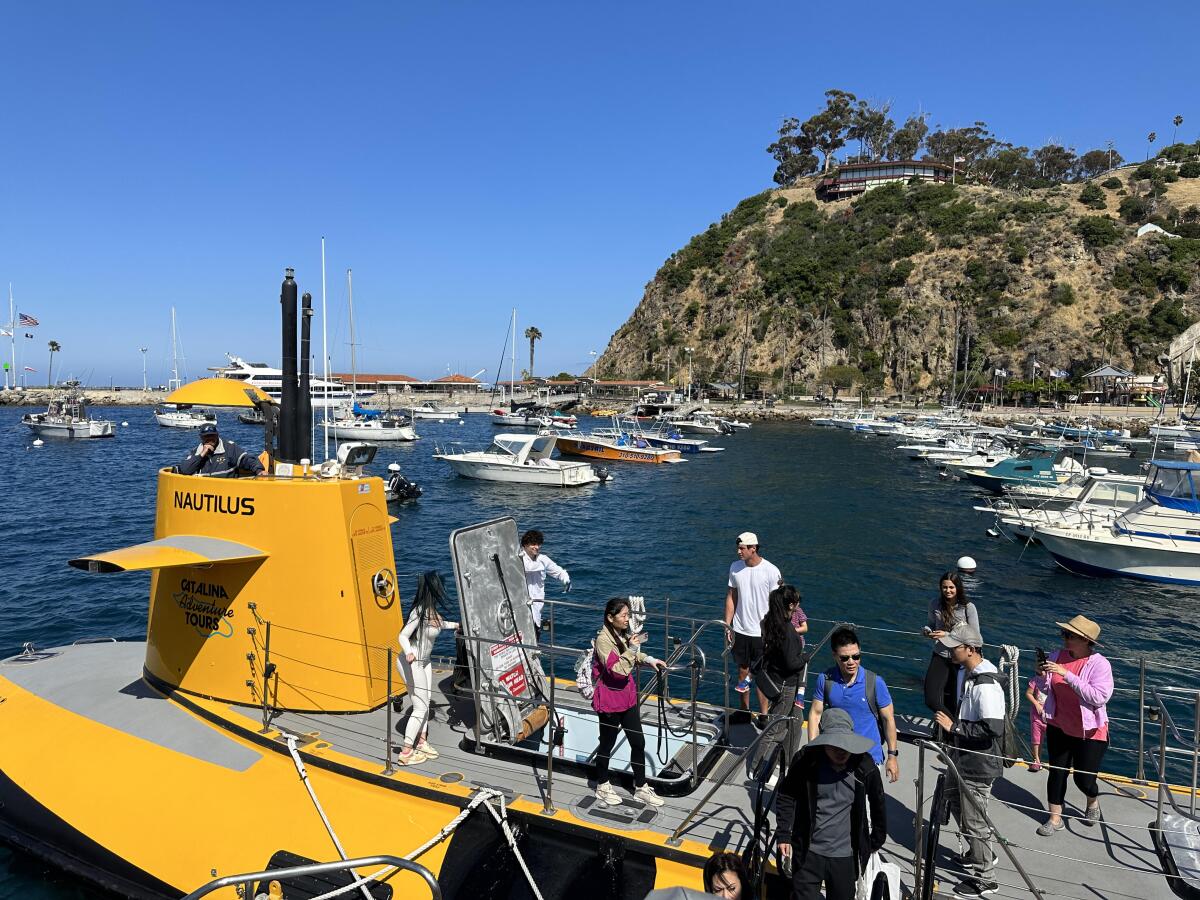
Passenger Joshua Wever seemed at ease taking in the underwater sights, saying it “feels like being at Disneyland or something.”
Wever said he followed the saga of the Titan closely. He said he had no desire to venture deep into the sea.
“Yesterday I went to the aquarium with my son, and while I was driving down there I talked about [the disaster] with my friends a lot,” Wever said.
Sightings of sea pickles and small chrome-colored fish closed out the trip for the underwater adventurers. Then it was open hatches and back into the afternoon sunshine.
Times staff writer Helen Li contributed to this report.
More to Read
Inside the business of entertainment
The Wide Shot brings you news, analysis and insights on everything from streaming wars to production — and what it all means for the future.
You may occasionally receive promotional content from the Los Angeles Times.
